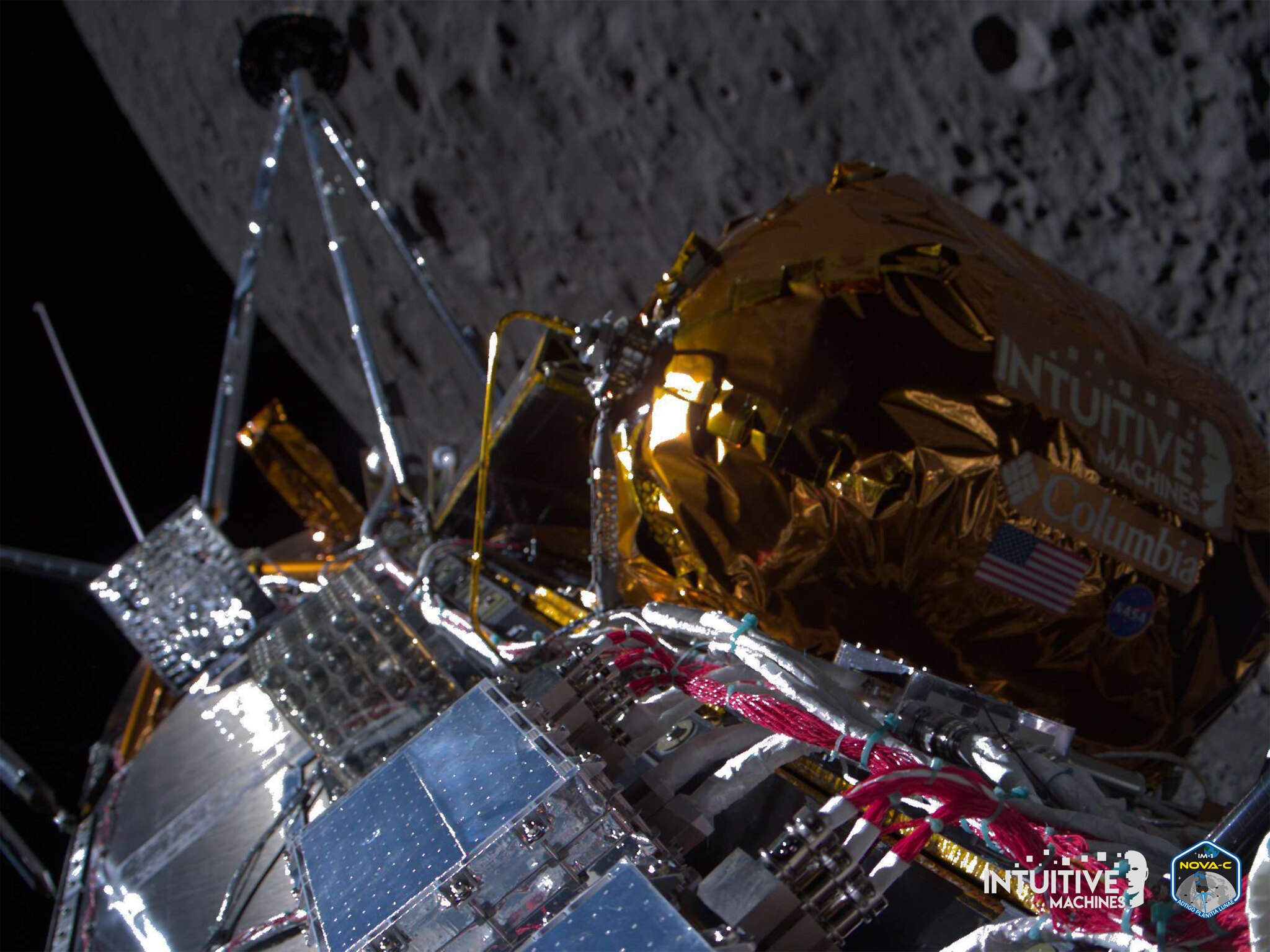Intuitive Machines achieves first American Moon landing since 1972
 The Odysseus spacecraft passes over the near side of the Moon following lunar orbit insertion. Credit: Intuitive Machines
The Odysseus spacecraft passes over the near side of the Moon following lunar orbit insertion. Credit: Intuitive Machines After more than 50 years, an American spacecraft has again landed on the surface of the Moon. The Intuitive Machines Mission One (IM-1) lander, nicknamed Odysseus, touched down in the crater Malapert-A near the lunar south pole at 6:23 p.m. EST on Feb. 22. This is the closest any spacecraft has landed to the lunar south pole, and the first time a private company has landed on the Moon.
In the initial minutes after the landing, mission control had only received a faint signal from the spacecraft and was working to refine the communications and better understand the state of the lander. Intuitive Machines also expects high-resolution images to be broadcast from Odysseus in the near future.
IM-1 launched Feb. 15 aboard a Falcon 9 rocket. After traveling for six days, Odysseus entered lunar orbit Feb. 21.
The landing is the second mission of NASA’s Commercial Lunar Payload Services (CLPS) program, which contracts American companies to perform lunar landings and deploy rovers to support the Artemis program. According to deputy associate administrator for exploration in NASA’s Science Mission Directorate Joel Kearns, the CLPS program comprises three primary goals: conducting science on the Moon, testing technologies for a future human presence, and fostering an industry that is highly skilled in lunar landings.
The CLPS program experienced a difficult start last month when Peregrine Mission One was called off hours after launch on Jan. 8 due to a propellant leak.
Among IM-1’s payload is the CubeSat EagleCam, which was deployed roughly 100 feet above the Moon’s surface to capture the first ever third-person images of a lunar landing.
Read more about lunar landing efforts in the 2024 Q1 edition of The Space Report, releasing April 8.